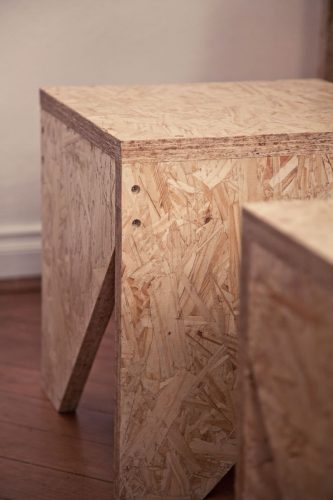
What are the different types of aluminium windows? How to choose the right one for your home?
November 26, 2024
12 Modern Window Grill Designs: Ensuring Strong and Secure Homes
November 28, 2024Wood prices are increasing in India, and this makes it so hard for buyers to go for wooden furniture while staying on a budget. But what if you can get an affordable alternative to normal wood? Presenting engineering wood to you. Engineering wood offers a cost-effective solution for all buyers who do not have high budgets to spend on furniture.
This article will help you understand everything you need to know about engineered wood India, so you can make the best decision for your infrastructure needs.
Meaning of Engineered Wood
Engineering wood means man-made wood. There are a range of engineered woods that are created by combining different materials like wood fibers, strands, or veneers with adhesives under heat and pressure. Engineered wood is known for its eco-friendliness and sustainability among consumers.
Also read: Types of Wood for Windows: Your Guide to Finding The Best One
Types of Engineered Wood
There are different types of engineered wood, which are discussed below.
Plywood
Plywood is one of the types of engineered wood, which is made from thin layers of grains, wood veneer, or plies. Wood veneers and grains are glued together with grain and adhesive to make plywood highly durable, strong, and resistant.
Plywood can be designed in different thicknesses and sizes, making it suitable for both structural and decorative purposes. It is lightweight and strong, which makes it easy to handle and transport. Plywoods are crack-resistant and are widely used for the infrastructure needs of both home and commercial requirements.
Source: Pinterest
Oriented strand board (OSB)
OSB is made by compressing wood strands. These wood strands are then layered with waterproof resins and glued together under excessive heat and pressure.
OSB is also known for its durability and resistance to warping, and while it may not have the same smooth surface finish as plywood, it provides a reliable, affordable alternative for many building applications. Due to its strengthening, OSB is mostly used for walls and roofs.
Source: Pinterest
Particleboard
Particleboard is an engineering wood made from sawdust and wood chips. In particleboard, particles like sawdust and wood chips are mixed like a dense mixture surface by using resins, heat, and pressure. These particles are then glued together to form a solid surface of a cost-effective wooden product.
Particleboard is commonly used in furniture manufacturing, cabinetry, and interior design. While it provides a solid surface for finishing, it is less resistant to moisture, which makes it better suited for indoor use. Unlike plywood, particleboard does not have layers of wood veneer, which makes it generally less expensive but also less durable.
Source: Pinterest
Medium-density fiberboard (MDF)
Medium-density fiberboard (MDF) is made up by breaking down wood fibers into multiple pieces. These pieces are then mixed with resins backed by a high amount of heat and pressure.
Engineered wood MDF is useful for molding and furniture making. It gives a smooth surface for painting on their material. While it is cost-effective, it is also more prone to damage compared to plywood or OSB. MDF is harmful to moisture, and that makes it best suited for indoor uses. Overall, MDF is favored for its affordability and smooth finish.
Source: Wiki
Also read: Where to Place Windows and Doors at Your Home as Per Vastu
Laminated veneer lumber (LVL)
LVL is an engineered wood made of thin layers of veneer. The layers of veneer are then glued with grain under high heat and pressure, which makes it a strong and durable choice for consumers.
LVL is popularly known for its ability to have high strength without bending. As the strength is high in the case of LVL, it is generally used in the case of engineered wood flooring, roofing, and framing. Not only that but its stability and resistance to shrinking or swelling under varying moisture conditions also make it a reliable option for consumers. LVL is a suitable option for someone who is looking for environmentally friendly wood as it maximizes the use of smaller, lower-grade wood materials.
Source: Pinterest
Cross-Laminated Timber (CLT)
CLT is known for its advancement in engineered wood products. CLT is advanced because it consists of layers of solid wood panels. These layers are structured perpendicular to the one below it and bonded together with adhesives.
CLT woods are growing among customers due to their eco-friendly features. These woods are made from renewable resources and can store carbon throughout their lifespan. These are preferable by consumers because they are lighter than traditional steel materials, which automatically reduces the need for heavy machinery during construction and transportation. Most importantly, CLTs are fire-resistant and energy-efficient, and that makes it a sustainable choice.
Source: Wiki
Engineering Wood Benefits
One of the primary engineering wood benefits is that it is a highly sustainable wood that comes with both strength and flexibility. Due to its layered structure, it can simply maintain with the moisture, and that makes it ideal for diverse construction projects and climates. Following are some other engineered wood advantages:
- Eco-Friendly: Materials like scraps, logs, and fibers are used while creating engineering wood that might otherwise go to waste. And this optimized usage of waste materials supports sustainability and ultimately makes engineered wood an eco-friendly option.
- Durability and Stability: As engineered wood is layered and glued with adhesives, it becomes more resistant to temperate or climatic changes. This gives engineering wood the stability not to crack and warp while its usage for construction.
- Cost-Effective: Typically, engineered wood comes as a cost-effective option compared to normal woods and can be produced in various sizes and designs. This gives engineered wood the edge over normal woods and makes a better choice for consumers who are budget-oriented.
- Easy installation and maintenance: Engineering woods can be installed easily as it requires cutting and shaping of wood fibers and scraps. Not just that, it is also simpler to maintain because of its durability throughout different conditions.
Also read: How to Get Rid of Termites at Home?
Engineered Wood Disadvantages
One of the major engineered wood disadvantages is that it can be less resilient compared to solid woods in certain applications. If there is excessive moisture in the weather condition, then there is a chance of weakening of engineering wood layers over time. Some of the other disadvantages of engineered wood are as follows:
- Limited Refinishing Potential: Engineered wood has a thinner top layer, which restricts the option of refinishing multiple times. This limitation makes it less ideal for areas where long-term surface renewal may be needed.
- Prone to Water Damage: Although engineered wood handles moisture better than solid wood, excessive exposure to water can still damage it. In humid or wet environments, the layers of engineering wood can separate and reduce its durability over time.
Conclusion
Engineered woods come with an eco-friendly and budgetable alternative to traditional wood, that too with different sizes and designs as per customer needs. Although the engineering wood quality includes durability and ease of installation, it is equally important to consider its limitations, like being prone to water damage.
Discover GreenFortune, Your Partner in Quality uPVC Windows and Doors
At GreenFortune, we are proud to offer high-quality uPVC windows and doors at affordable prices. We offer and install a variety of window types for all homes with both durability and aesthetics in mind.
Contact us to find out more about the uPVC window design that we offer. Whether you are renovating your existing home or building a new one, partner with us to elevate the comfort levels and energy efficiency in addition to the style quotient of your space provided by our superior-quality uPVC windows.
Frequently Asked Questions
- What is meant by engineering wood?
Engineering wood is a type of man-made product consisting of wood fibers, strands, or veneers, all of these materials are bonded by adhesives under high heat and pressure. It is the best option for someone who is looking for durability with a cost-effective option.
- Is engineering wood good?
Yes, engineering wood is one of the best options available for the construction process. The environmental benefits of engineering wood make it a popular option for various applications, especially on a budget.
- Is engineering wood better than plywood?
Although both engineering wood and plywood have strengths, engineering wood is better than plywood in terms of moisture resistance. The choice of going with engineered wood or plywood is mainly based on specific project requirements.
- Which is better, MDF or engineered wood?
Engineered wood is better than MDF, as MDF can be damaged where there is moisture in the weather. While MDF provides an affordable solution to consumers, engineered wood is a better choice for consumers who are looking for long-lasting solutions.













